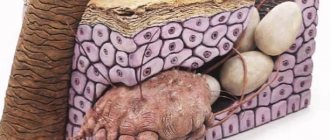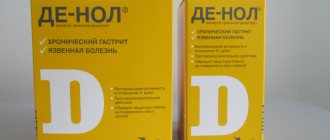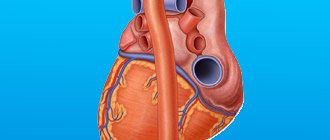The terms "dermatitis" and "eczema" are synonymous. The term eczema is usually applied to the dermatitis seen in atopic individuals. The term "dermatitis" means inflammation of the skin. It can be acute with weeping, formation of crusts and vesicles, subacute or chronic with dryness, peeling and cracks.
Skin rashes are almost always itchy and are usually complicated by secondary infection.
Dermatitis can be exogenous (eg, contact, irritant, infectious or photodermatitis) or endogenous (eg, atopic, seborrheic, discoid).
Most often, the diagnosis is made on the basis of a detailed history and morphological studies of skin rashes, taking into account the characteristics of their distribution.
Atopic dermatitis
Atopic dermatitis begins in childhood, between 2 and 6 months of age, and affects about 2% of the population, but is now experiencing an increase in prevalence. A family history of atopy is present in 70% of patients. Hay fever (hay fever) and/or asthma may develop as your child gets older. More than 90% of children recover by age 12, but it is very difficult to predict this in an individual child.
Atopic dermatitis in children affects the face, neck, and torso. Later, the flexor surfaces are involved in the process: popliteal, elbow, wrist and ankle joints, and as a result of repeated scratching, lichenification of the skin can occur. Hand dermatitis usually appears later in life. Secondary infection is common and often leads to worsening of the dermatitis. Pruritus can be debilitating and cause great distress for patients and families. Some patients, especially infants and young children, have food allergies, most often to eggs, fish and dairy products. With atopic dermatitis, many skin disorders can be identified. Immunological abnormalities include a tendency to increase immunoglobulin E, a predisposition to anaphylactic reactions, and a decrease in local cell-mediated immunity. This leads to increased sensitivity to viral infections.
Make an appointment now!
Leave your contact details or call and our manager will contact you to make an instant appointment
How does the reaction occur?
How quickly an allergen can trigger an immune response depends on its ability to bind to the protein compounds contained in the skin.
For example, dinitrochlorobenzene (a very strong allergen) binds to proteins containing the amino acids lysine and cysteine and forms an antigen. Macrophages (Langerhans cells), which respond to the penetration of foreign components into the body, begin to form an immune response, which leads to an inflammatory reaction. Some T-lymphocytes turn into memory cells during their work, which is why upon subsequent contact with the allergen, the reaction occurs again. Among medical drugs and products, allergic manifestations are most often caused by antiseptics, local anesthetics, and latex products.
Discoid dermatitis
Discoid dermatitis is characterized by the appearance of round or oval spots in symmetrical areas, often on the extensor surfaces, usually in adult patients. Exogenous causes must be excluded.
Dyshidrosis is a variant of eczema in which recurrent vesicles or bullae affect the palms, fingers, toes, or both. The disease is characterized by remissions and exacerbations, which are sometimes provoked by fever, emotional stress, and active fungal infection.
Symptoms
Allergic reactions can be acute and rapid (within 24-48 hours), or take several days or months to first appear. Such reactions are usually very itchy, papular, with an unclear outline of the manifestation. The skin turns red. Vesicular and oozing areas of the lesion may occur. Ulceration is rare. Irritant contact dermatitis
more often associated with a local increase in temperature and a stinging sensation. The skin may be cracked, rough and dry. Redness, oozing of the affected areas, and inflammation may develop with chronic irritant contact dermatitis. Pain may be present if the skin is cracked and the area is very tender. Both forms of contact dermatitis are found on areas of the body that are exposed to the pathogen. Thus, the hands, especially the interdigital areas, are a typical location. Eczematous lesions with oozing, papules, crusts, or thickenings are often present.
Irritative dermatitis
In irritative dermatitis, the rash may be caused by physical or chemical irritation and damage to the skin, in which case it is not usually associated with an allergy. This type of damage can be caused by soap, detergents, food products, and building materials.
The necessary examination and adequate modern treatment for each form of dermatitis can be determined by highly qualified specialists of our center - the Three I Immunology Clinic - allergists and dermatologist. Come visit us at Novosibirsk, st. Galushchaka, 2, we will help solve your problems!
Diagnosis and treatment
The physical examination is complemented by skin testing using a patch test if the reaction occurs frequently or persists for a long time. Treatment may vary: either washing with copious amounts of water and avoiding further exposure to the irritant, or therapy with corticosteroids. Emollients are used to aid the healing process. In most cases, the skin becomes clear within 3 weeks. Soap should not come into contact with affected areas. Severe, persistent, or infected lesions may require the use of systemic corticosteroids, antibiotics, or calcineurin inhibitors.
If you find an error, please select a piece of text and press Ctrl+Enter
Popular promotions
View all promotions
Dermatoscopy free of charge
Dermatoscopy is a non-invasive diagnostic method for the visual assessment of skin lesions, which allows a more thorough examination of both the surface of the skin and its deeper layers.
Read more…
SMAS lifting using the UCOS HIFU device
The procedure for exposure to highly focused ultrasound on the latest HIFU UCOS device is a triple rejuvenating effect on the deep ligaments of the face, subcutaneous fat packets and skin!
Read more…
Chronic tonsillitis
Chronic tonsillitis is not only a sore throat, but also general weakness, fatigue, low-grade fever, etc. Only in November, treatment with the Tonsillor device instead of 450 rubles . per session you will pay 350 rubles !
Read more…
Akriderm preparations for dermatoses
Akriderm ointments and creams are combination preparations that contain several active substances at once, which provide comprehensive treatment for dermatitis of allergic and non-allergic nature. They provide:
- antipruritic effect;
- anti-inflammatory effect;
- antiallergic effect;
- vasoconstrictor effect.[6]
This therapeutic effect was achieved thanks to a thoughtful combination of glucocorticosteroids with broad-spectrum antibiotics and antifungal components. Akriderm ointments and creams not only fight redness, itching and swelling, but also protect the skin from bacterial and fungal infections.
In the fight against contact dermatitis (simple and allergic), it is advisable to use the following Akriderm preparations:
- Akriderm SK ointment contains salicylic acid, due to which it acts quickly and has a favorable safety profile.
- Akriderm GENTA ointment is used for chronic skin pathologies, in particular those complicated by secondary infection.
- Ointment or cream "Akriderm GK" - used for acute and chronic inflammation to suppress unpleasant symptoms
- Ointment or cream "Akriderm" - thanks to the thoughtful concentration of active substances, can also be used for children over 1 year of age.[7]
links to sources
- Contact dermatitis - Clinical guidelines, Russian Society of Dermatovenereologists and Cosmetologists, 2021.
- Dikovitskaya I.G., Korsunskaya I.M., Nevozinskaya Z. Contact dermatitis: clinical picture and therapy // Sovrem. problems of dermatovenerology, immunology and medicine. cosmetology. 2010. T. 4. No. 4. pp. 49–51.
- Stepanova E.V. Allergic contact dermatitis: basic approaches to diagnosis, treatment and prevention // Attending physician. - 2009. - No. 10. - P. 15-19.
- Mercedes E. Gonzalez, “Contact dermatitis” MD, University of Miami Miller School of Medicine.
- Batyrshina S.V. Glucocorticosteroids for local use in the modern strategy for the treatment of inflammatory dermatoses in pediatric practice // Practical Medicine, 2014. No. 9 (85). pp. 94–102.
- Federal clinical guidelines. Dermatovenereology 2015: Skin diseases. Sexually transmitted infections. – 5th ed., revised. and additional – M.: Business Express, 2021. – 768 p. 3. Instructions for use of the medicinal product for medical use Akriderm®. No. Reg. beat LS-002317, R N000663/01.
- Instructions for medical use Akriderm®
Chatterbox
Prepare a semi-alcohol solution: to do this, dilute 40 ml of alcohol with the same volume of water. Add 2 ml of 2% lidocaine or novocaine to the resulting solution - this will help relieve the painful symptom.
Add 30 g of dry white clay and the same amount of powdered zinc. Mix thoroughly until smooth.
The finished mash is applied to the affected skin, previously cleaned with an antiseptic, in a thin layer, the mixture is left on the skin for 20 minutes. There is no need to apply a bandage on top; excess talker can be carefully removed, and the remaining part on the skin forms a protective film.
Remember! Do not self-medicate, consult a doctor!
Cutaneous dermatitis is a general name for skin disorders caused by various irritants. All irritants can be divided into 2 large groups: those that cause irritation upon direct contact and those that affect the body when they get inside.
Sources:
- Molochkova Yulia Vladimirovna, Dermatology. Brief reference book, publishing house: GEOTAR-Media, 2017
- Baumann Leslie, Cosmetic Dermatology. Principles and practice, publishing house: MEDpress-inform, 2016
- Ratner Desiri, Avram M.R., Avram M.M., Procedures in Dermatology. Clinical cosmetology, Publishing house: GEOTAR-Media, 2019
- Sukolin Gennady Ivanovich, Clinical dermatology. A short guide to the diagnosis and treatment of dermatoses, publishing house: Notabene, 2017
Photos of dermatitis
Photo album on the diseasePrevention
To prevent contact dermatitis, you need to pay attention to medications that are highly allergenic, including furatsilin, antihistamines, and topical anesthetics. Persons frequently in contact with low molecular weight substances are advised to use gloves, protective clothing and moisturizers.
After identifying the allergen, it is necessary to prepare a comprehensive list of drugs, objects, and substances that should not come into contact. If you are allergic to fasteners and rivets of clothing, it is recommended to seal them on the reverse side with a plaster or cover them with fabric. If you are allergic to latex, you should avoid wearing gloves and latex condoms. If you are allergic to formaldehyde or other components of cosmetics, you must carefully study the packaging of purchased cosmetics.
Ointment "La-Cri" - a reliable assistant
To care for affected skin, either alone or in combination with ongoing therapy, we recommend using La Cree cream. This is a non-hormonal product that does not contain dyes or fragrances, and therefore is suitable even for newborns, nursing and pregnant women.
The natural composition of the cream is selected in such a way as to simultaneously solve all the problems of irritated skin. The product perfectly relieves redness and itching, promotes rapid regeneration of damaged skin, nourishes and softens even very dry and flaky skin.
As an auxiliary product, you can use the non-greasy emulsion “La-Cri”, which provides gentle care for the skin, moisturizing it and protecting it from drying out. Treatment of dermatitis on the face will be faster with La-Cri washing gel, which gently cleanses delicate skin without clogging pores.
Experts' opinion
The conducted clinical study proves the high efficiency, safety and tolerability of products for daily skin care of children with mild and moderate forms of atopic dermatitis and during remission, accompanied by a decrease in the quality of life of patients. As a result of therapy, a decrease in the activity of the inflammatory process, a decrease in dryness, itching and flaking was noted.
The products are recommended by the St. Petersburg branch of the Union of Pediatricians of Russia.
It has been empirically proven that La Cree emulsion moisturizes and nourishes the skin, relieves itching and irritation, and also soothes and restores the skin.
Causes
Allergic dermatitis is provoked by any substances and materials individually for each person, but there are several groups of substances due to which the problem occurs more often.
The main reasons for the development of the reaction:
- metal alloys, which include nickel, cobalt, chromium - jewelry, kitchen utensils, rivets/clasps, keys, dental crowns, braces, staples and pins for osteosynthesis;
- latex – condoms, gloves;
- ethylenediamine hydrochloride - some drugs, antihistamines;
- formaldehyde – insecticides, cosmetics, workwear;
- chlormethylisothiazolinone – found in cosmetics;
- anesthetics in the form of creams, sprays.







